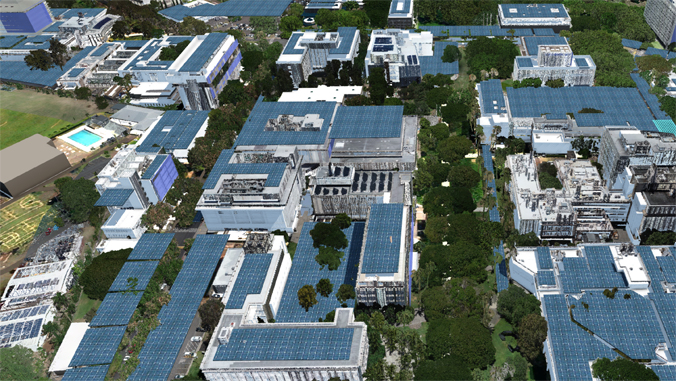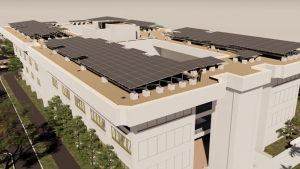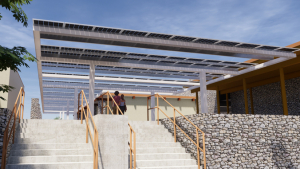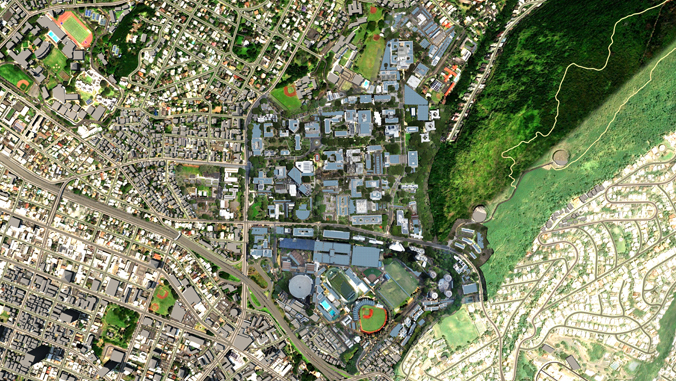
The University of Hawaiʻi is working on a comprehensive solar initiative to install PV across the Mānoa campus over the next 20 years marking a significant step toward a more sustainable future for the university. UH Mānoa spent $39 million in 2023 in energy costs. The UH Office of Sustainability plan incorporates PV over parking structures, walkways, rooftops and throughout buildings across the Mānoa campus. The ambitious project will have a phased build-up plan spanning two decades.
“This PV plan is another crucial step in promoting sustainability at the university,” said Jan Gouviea, UH Vice President of Administration, who oversees the Office of Sustainability. “We are developing a well-thought-out plan, ensuring that the university’s construction aligns with academic and environmental objectives.”

The proposal, part of a larger strategic energy management plan, aims to meet UH’s net-zero energy goal by 2035 and serve as a model for other institutions and the state of Hawaiʻi, which has set a 2045 100% renewable energy mandate on our public utility. The UH plan incorporates solar panels, batteries and efficiency measures to generate clean energy in a way that aligns with the university’s long-range development plan (LRDP).
Previous projects include a PV canopy project on the Mānoa lower campus parking structure, which was completed in two phases. The phase 2 parking structure was energized in September 2019, and the phase 1 parking structure was recently energized in December 2023. As well as five PV powered umbrella, table and bench systems that were installed in the Life Sciences Building courtyard and on the building, and most recently the rooftop array featured atop Bachman hall energized in January 2024.
Currently there are five more projects in various stages of construction including Gyms 1 and 2, Law School, Law Library, Sakamaki Hall and the School of Architecture. The School of Architecture is fully permitted and will commence construction this summer.

“This plan is a key in securing permits from the Department of Permitting and Planning, which allows us to be as prepared as possible so we can execute on projects once the funding is available,” said Topping. “Disconnected from imported fossil fuels is a matter of urgency and we feel UH must help lead the way.”
Developing this plan required a meticulous process, involving campus stakeholders, environmental assessments, while balancing the need for renewable energy with preserving essential elements on campus such as trees and historic buildings.
UH has requested $20 million each year as a capital improvement line item from the Hawaiʻi State Legislature to meet the net-zero mandate for UH placed by the legislature. UH has also reached out to the federal government for community directed spending, and partnered with the Hawaiʻi State Energy Office to pursue funding opportunities through the Infrastructure Investment and Jobs Act and the Inflation Reduction Act, which includes the tax credits that could help offset costs. In addition to state and federal investments, UH has set up a green revolving fund account which accepts philanthropic donations.
The LRDP includes the Campus Wide PV plan shown on page 85 and is accessible online (PDF).


